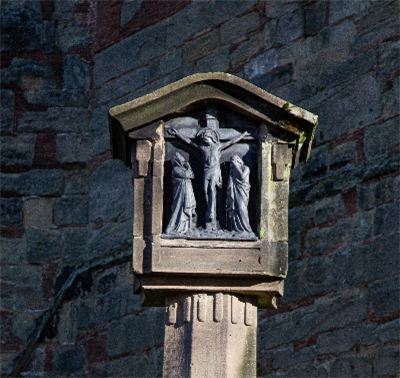Last summer's National Festival of Archaeology went online.
Here's some information about our own archaeology and heritage. Some of our naughty church mice got involved, with their own archaeological dig. Our clever artist caught them in the act!
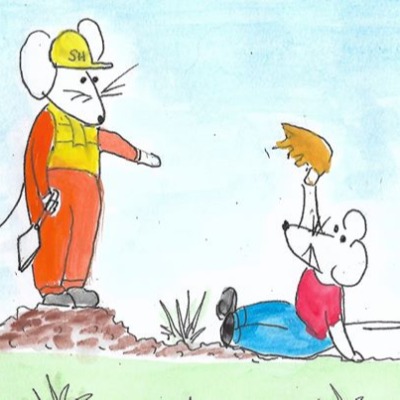
The photo below is of our archaeological dig, which took place in 2012, before planning permission was granted for our Heritage Centre. We knew that St Helen's was at the heart of Ashby's original Saxon settlement, but we were still unprepared for what our archaeologists found.
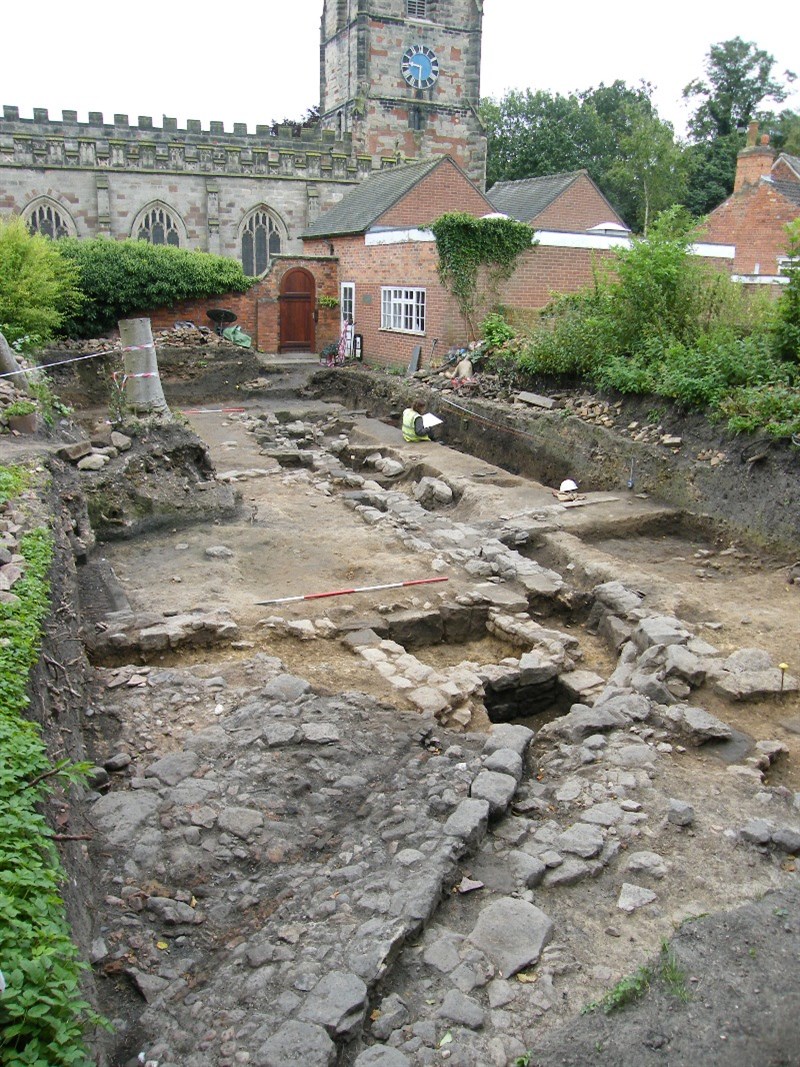 The dig took place in the garden of the Church 'Cottage,' which had been used since 1976 as a social facility for the Church. The 'Cottage' can be seen in the right background of the photo, with the gate leading into the churchyard next to it.
The dig took place in the garden of the Church 'Cottage,' which had been used since 1976 as a social facility for the Church. The 'Cottage' can be seen in the right background of the photo, with the gate leading into the churchyard next to it.
Our archaeologists uncovered the foundations of a medieval two room building with attached garderobe (toilet). The building had a brick fireplace, which can just be seen on the left of the photo. The garderobe is the small square in the centre foreground. We believe that this building was a vicarage.
Running from the bottom left of the photo is the remains of a causeway, a route to Ashby's original Grammar School, built in 1567. By the time this was built, the vicarage would have been demolished.
Close to where the gate now stands, the archaeologists found evidence of a Civil War ditch, where Royalist soldiers waited to defend Ashby Castle against the Parliamentarian garrison stationed at Coleorton Hall.
The photo below is a close up of the vicarage fireplace.
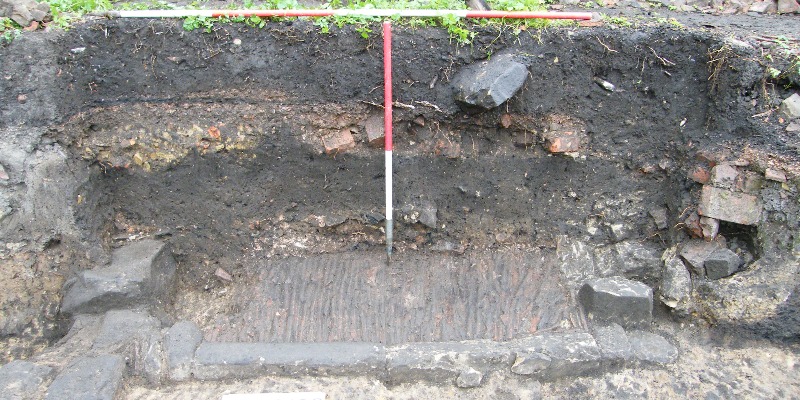
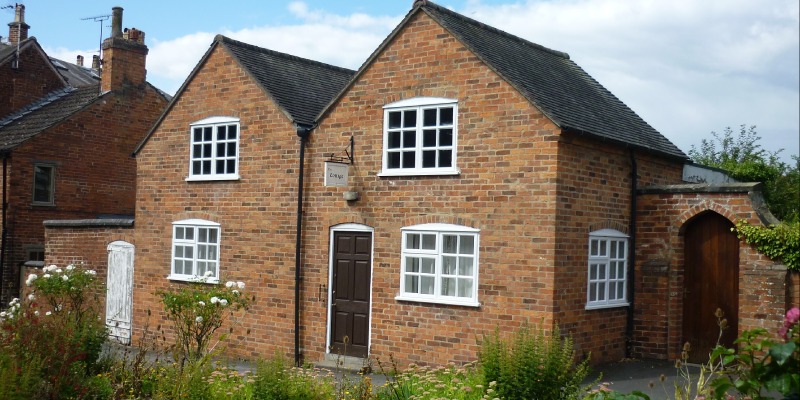
This photo shows the Church 'Cottage.'
It was purchased by the church and turned into a Church Hall with toilets, a small kitchen, meeting room and garden in the mid 1970s. By 2008 it was in serious need of refurbishment, so the church decided to build a bigger, better facility. It took nine years from that decision to achieve our goal. The project grew from a Church Hall to a Heritage Centre, a building which would explain and display the rich heritage of our site and deliver heritage activities to the community as well as a Hall, office and meeting room. All this was achieved with the help of the Heritage Lottery Fund. Focus on the pedestrian gate in the wall beside the building. This is the only access route to the site of our new Hall. All the soil from our archaeological dig had to be barrowed in and out by hand. Many hours of volunteer time were spent digging a metre of soil from the site for the archaeologists to start work in 2012. Once the dig was over, all of the building materials for the Hall had to enter through this small gap in the wall.
Day 2
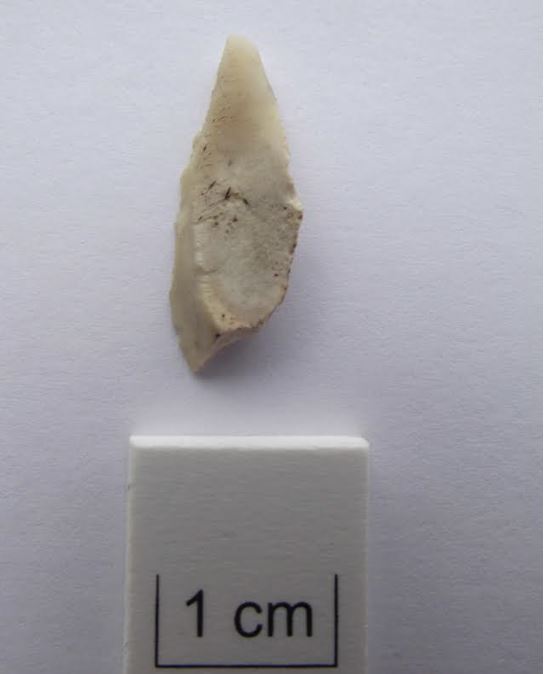
One of the most exciting finds during the 2012 dig was a Mesolithic Microlith. It doesn't look much, but it is an indication of hunter gatherers moving across our site up to 10,000 years ago. The unfinished nature of the microlith may indicated tool production in the area.
Day 3
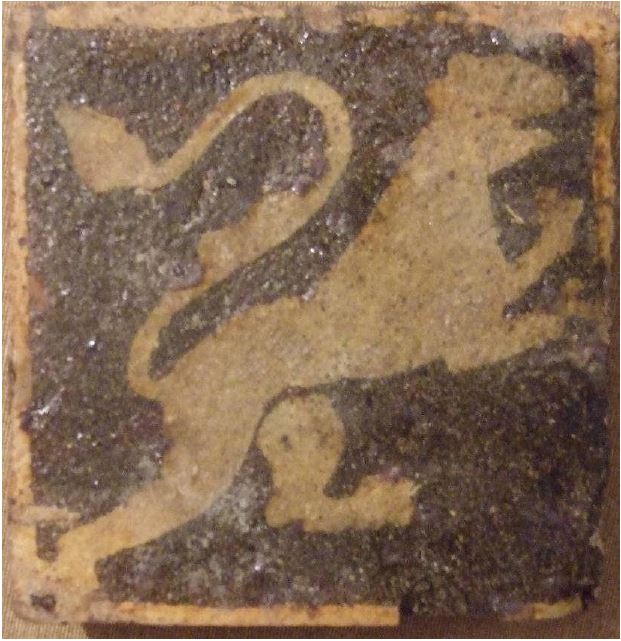
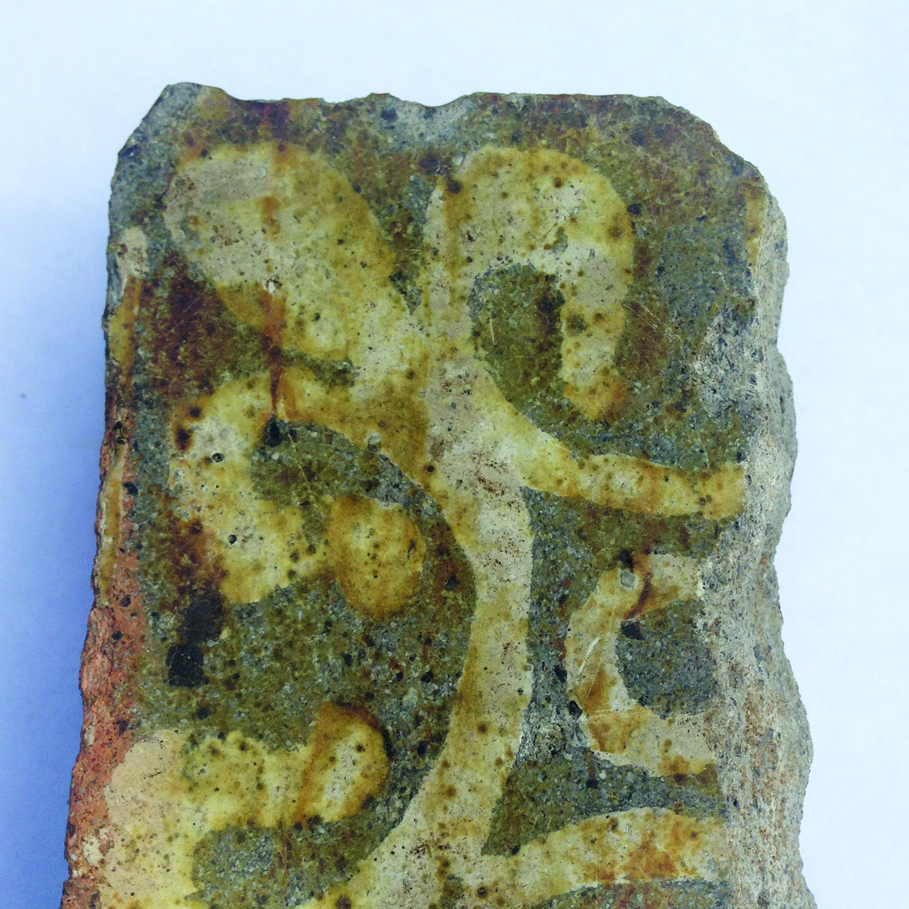
Thirty five medieval glazed floor tiles, four of them complete, were recovered from the site of St Helen's first vicarage during our dig in 2012. Here are just two of them. Glazed floor tiles were expensive in the middle ages and less commonly used in secular buildings. These were produced at Chilvers Coton, near Nuneaton, probably in the early 1300s. Here we have a lion and a fleur de lys. The tiles found at St Helen's are the same as ones found at Lilleshall Abbey. The churches of both Ashby and Blackfordby were gifted to Lilleshall around 1144 and remained under its control until the dissolution of the monasteries in the 1530s.
Day 4

Have you ever noticed the skull and crossbones carved into the pillars on each side of the gate into St Helen's Churchyard? We're told this may indicate that there are plague pits nearby. We've never found any plague pits, but we do know that there were cases of Bubonic Plague at the Castle during the Civil War in the 1640s.
The photo below is of a glazed, spiked ridge tile, which would once have been on the roof of our original vicarage. We also found Charnwood slate roof tiles. A roof of this type, made predominantly of slate but with glazed ridge tiles, is possibly 15th Century. One theory about the spikes is that they might have deterred witches from landing on the roof. A superstitious vicar back in the 15th Century then?
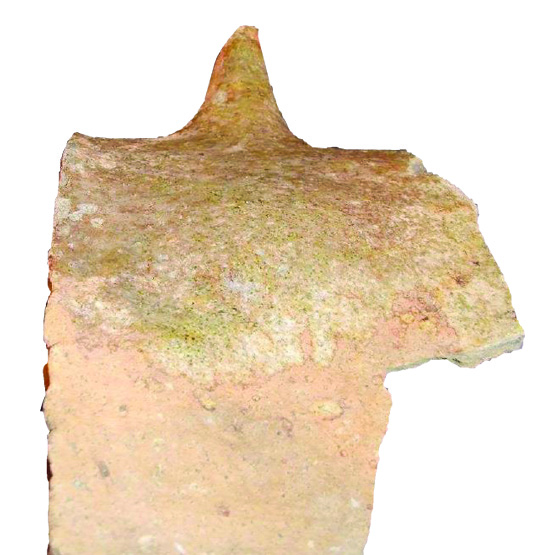
Day 5
The next photo was taken in 1912 and shows workmen standing on wooden scaffolding around the Tower of St Helen's Church. Not much health and safety going on then! They were carrying out repairs and re-pointing to the external stonework. The work was done by Ashby firm Slater & Sons over a period of around four months and cost approximately £700.
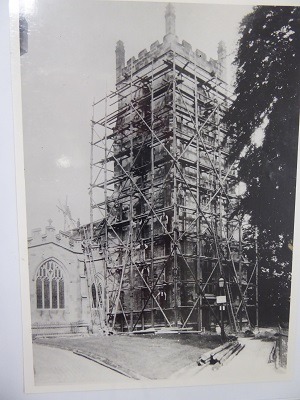
What do soldiers do to pass the time when they're sitting in a trench waiting for something to happen? We have some idea of what the Royalist troops sitting in their trench on our site in the 1640s did. They made musket balls and they ate and drank. This is what's left of a Frechen bottle with the arms of the City of Amsterdam on it. (The modern arms of the city are shown top right in the picture). It would have contained beer! Cheers!
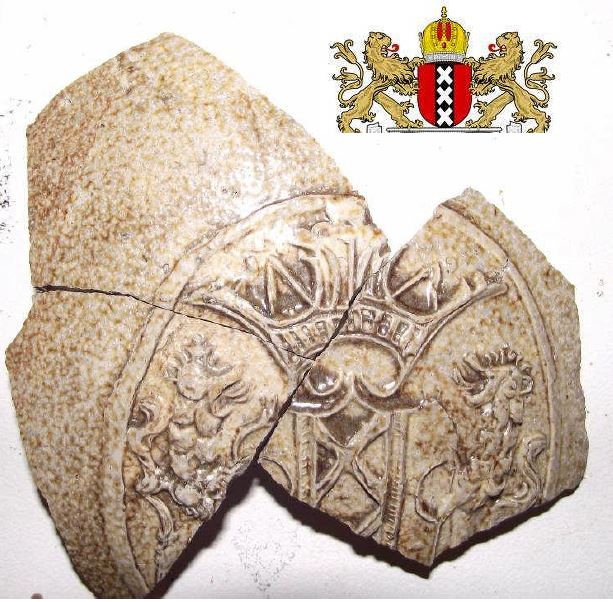
Day 6
Have you ever looked up at the south wall of the Tower? Many people don't notice our sundial. The curved brickwork around it is actually part of the structure of the wall, which leads us to believe that it was put there when William, Lord Hastings, raised the Tower in the 1470s. If that is the case, then it was cutting edge technology, as the knowledge needed to create this type of sundial (a declining vertical sundial) had only been worked out in Europe around 50 years before. Lord Hastings and his family and guests, sitting in the Solar at the Castle, just the other side of the wall, would have been able to tell the time on sunny days. Look up next time you're passing. Our sundial still tells the time pretty accurately - though at this time of year you'll need to make an adjustment for British summertime!
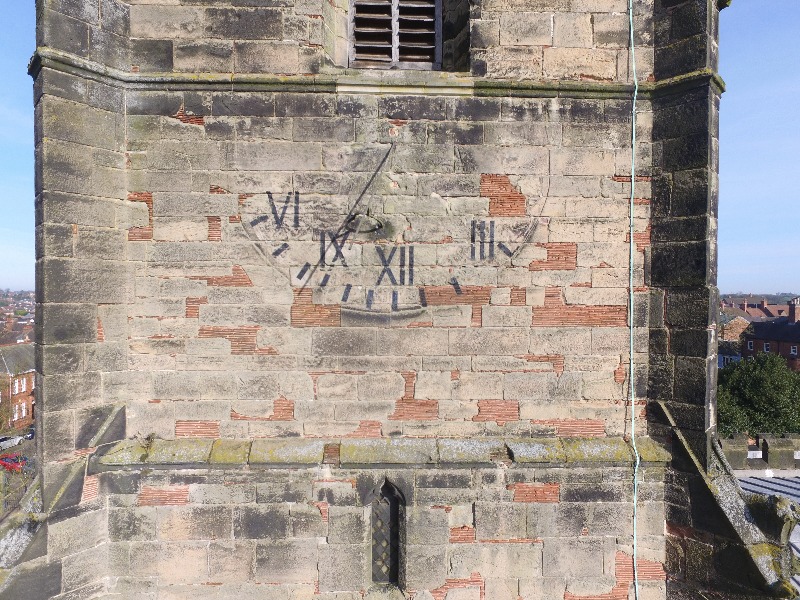
This next artefact doesn't look like much - a holey piece of pottery from a holy site (please forgive the pun!). It's actually the remains of a Midland Yellow ware colander. This type of pottery was mainly produced between 1550 - 1650. Its earliest appearance can be dated to around 1500 at the site of the Austin Friars in Leicester.
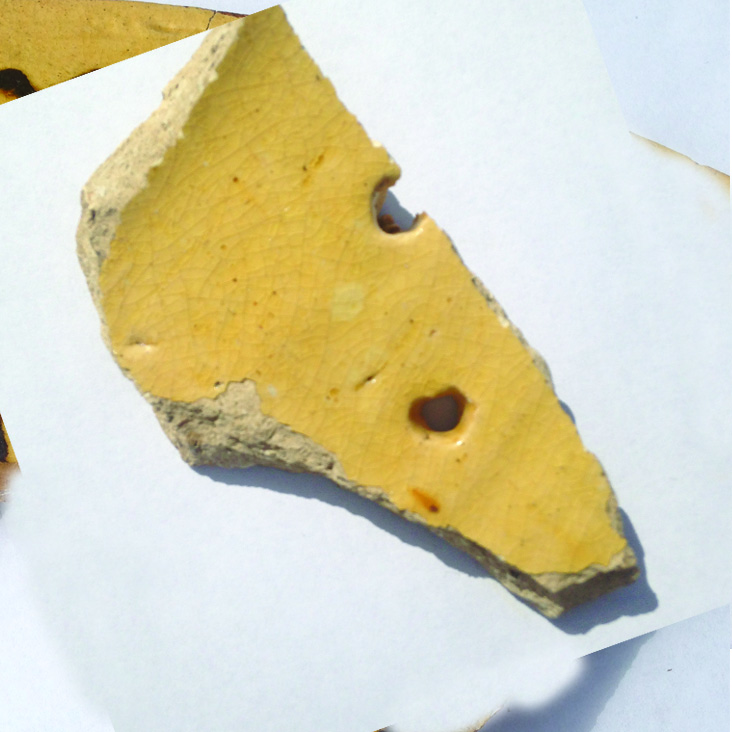
Day 7
The photo below is of Canon John Denton, MA (photo courtesy of Ashby Museum), who was vicar of St Helen's from 1875 until his death in 1903. The grand tomb, close to the path which runs along the north side of the churchyard, is his last resting place. A Yorkshire man by birth, he arrived in Ashby in the 1850s as vicar of Holy Trinity Church. He married Mary Anne Vavasour, daughter of Rev'd Marmaduke Vavasour - then vicar of St Helen's - in 1857 and moved his family across town to St Helen's vicarage when Vavasour retired in 1875. He led the campaign to raise funds for the restoration and extension of St Helen's between 1878-1880. He also led the project to refurbish and rehang the bells in the Tower in 1886.
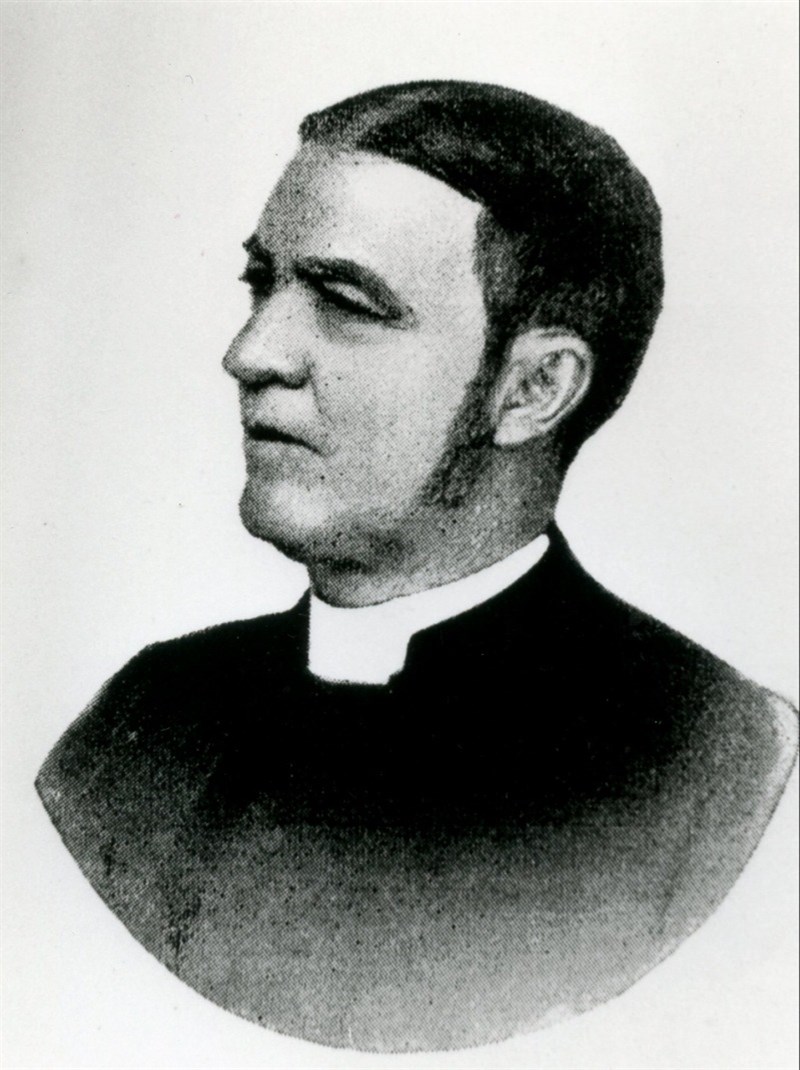
Day 8
We have some graffiti at St Helen's. Not very much, because our Victorian ancestors moved the walls of the church (literally!) by extending the church sideways fifteen feet on its north and south sides. There is a small amount of graffiti scratched onto the insides of the windows in the room above the vestry. Who was 'John Mansfield, Plumber and Glazier?'
We also have a few 'witch marks.' This daisy wheel is on the south wall of the Tower. According to 'Historic England,' marks such as this were usually scribed onto stone or woodwork near a building’s entrance points, particularly doorways, windows and fireplaces, to protect inhabitants and visitors from witches and evil spirits.
They date back to times when belief in witchcraft and the supernatural was widespread. Magical symbols and ritual objects were a common part of life from around the 16th to the early 19th century.
If you're passing the church, see if you can spot the daisy wheel on the Tower wall.
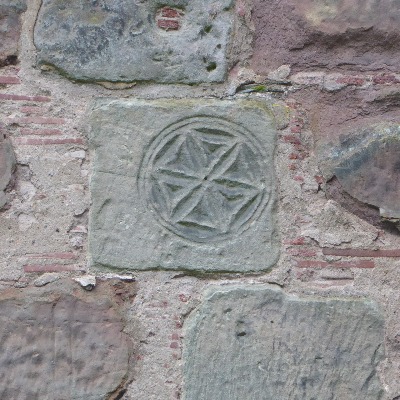
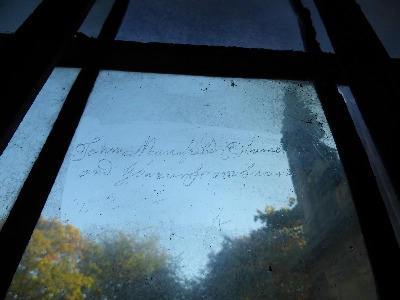
Carving of a different kind. Here we have the West Door of St Helen's Church. It leads into the ground floor ringing room. From there, double doors lead on down the central aisle of the church.
Around the door are a number of carvings. We have the heads of Queen Victoria and Archbishop Campbell Tait on either side of the doors. Tait was Archbishop of Canterbury when the church was extended between 1878-1880. Hence his presence here.
There are also several coats of arms, including the famous 'Hastings maunch,' a medieval sleeve design which symbolises the Hastings family. A particularly interesting one is the three frogs - or toads. This is the only instance of toads to be found on a coat of arms! They belong to the de Boutreaux family, who married into the Hastings family in the 15th Century. There could be a darker meaning for the toads however, as in the Book of Revelation, three toads acted as heralds for the Dragon, the Beast and the False Prophet. A strange heraldic feature for a family to adopt, maybe!
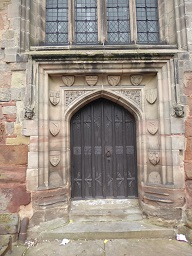
Day 9
Pictured below are three finds from our archaeological dig beneath the site of our Heritage Centre.
The first is a musket ball with the sprue still attached - evidence that soldiers were on our site during the Civil War in the 1640s, making musket balls. This one, and many others like it found on our site, was never used in anger.
The second object is a clay pipe with an Irish harp and shamrock design. It was one of many clay pipes found on our site, but one of the prettiest and most intricate. It was made some time after 1840. Apparently, both men and women smoked tobacco in pipes during the mid 19th century. Working class people were said to prefer short stemmed pipes while the middle classes preferred longer stems!
Our third object is a pottery hand. By the 19th Century our site was the bottom of the Vicarage garden, an ideal place at the time to dump the rubbish. This was once a child's toy, but had reached the end of its useful life by the time it found its way onto our site. I wonder how many children played with the doll it came from?
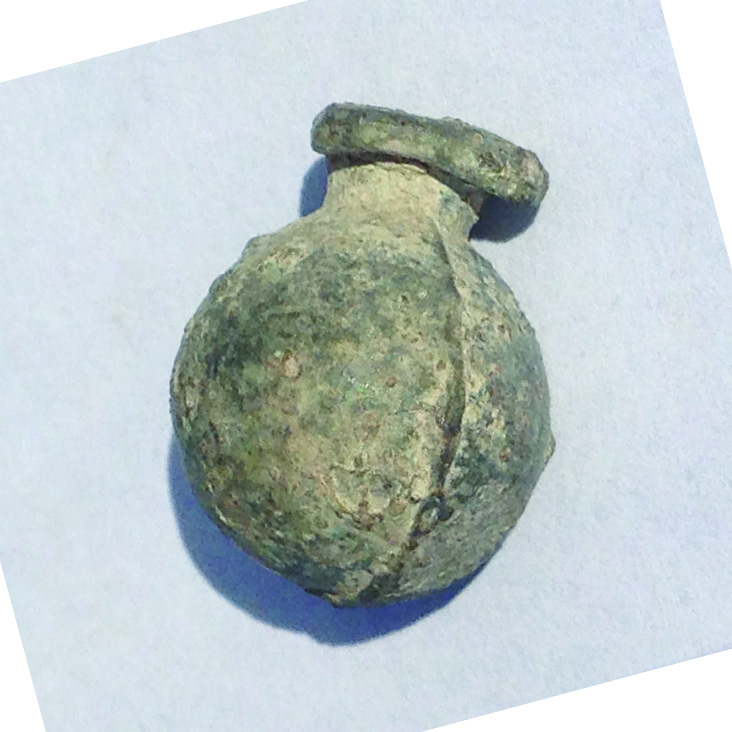
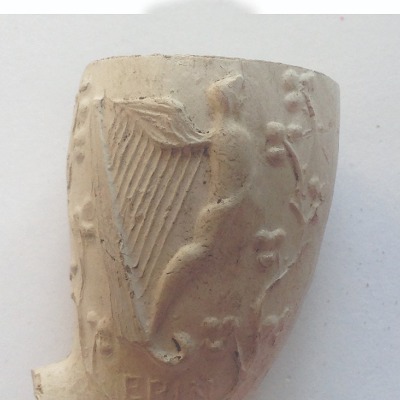
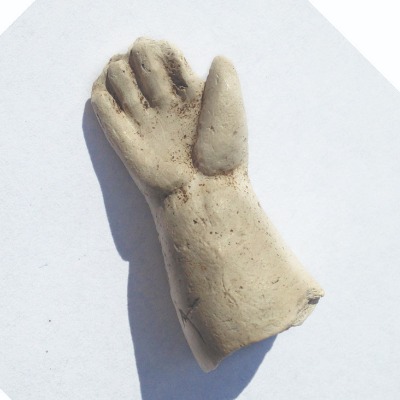
The war memorial in St Helen's Churchyard commemorates the dead of World War I. It was dedicated by the Bishop of Peterborough on 13th November 1919. It is made up of a red brick octagonal plinth with stone plinth above. The shaft terminates in a gabled bas relief of the Crucifixion. Carved lettering around the stone plinth reads, "In glorious memory of all those who from this town gave their lives for England and for us. 1914-1919."
